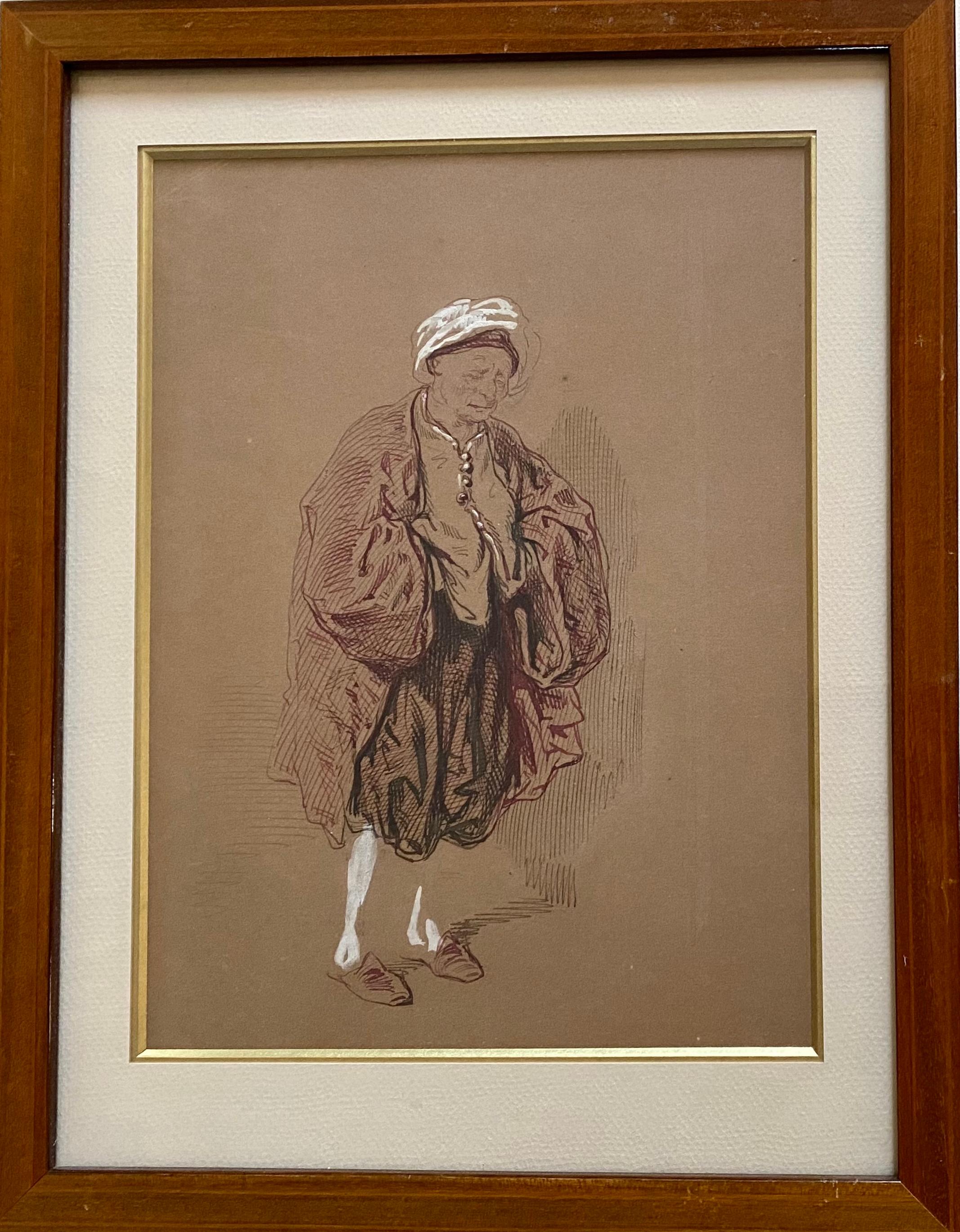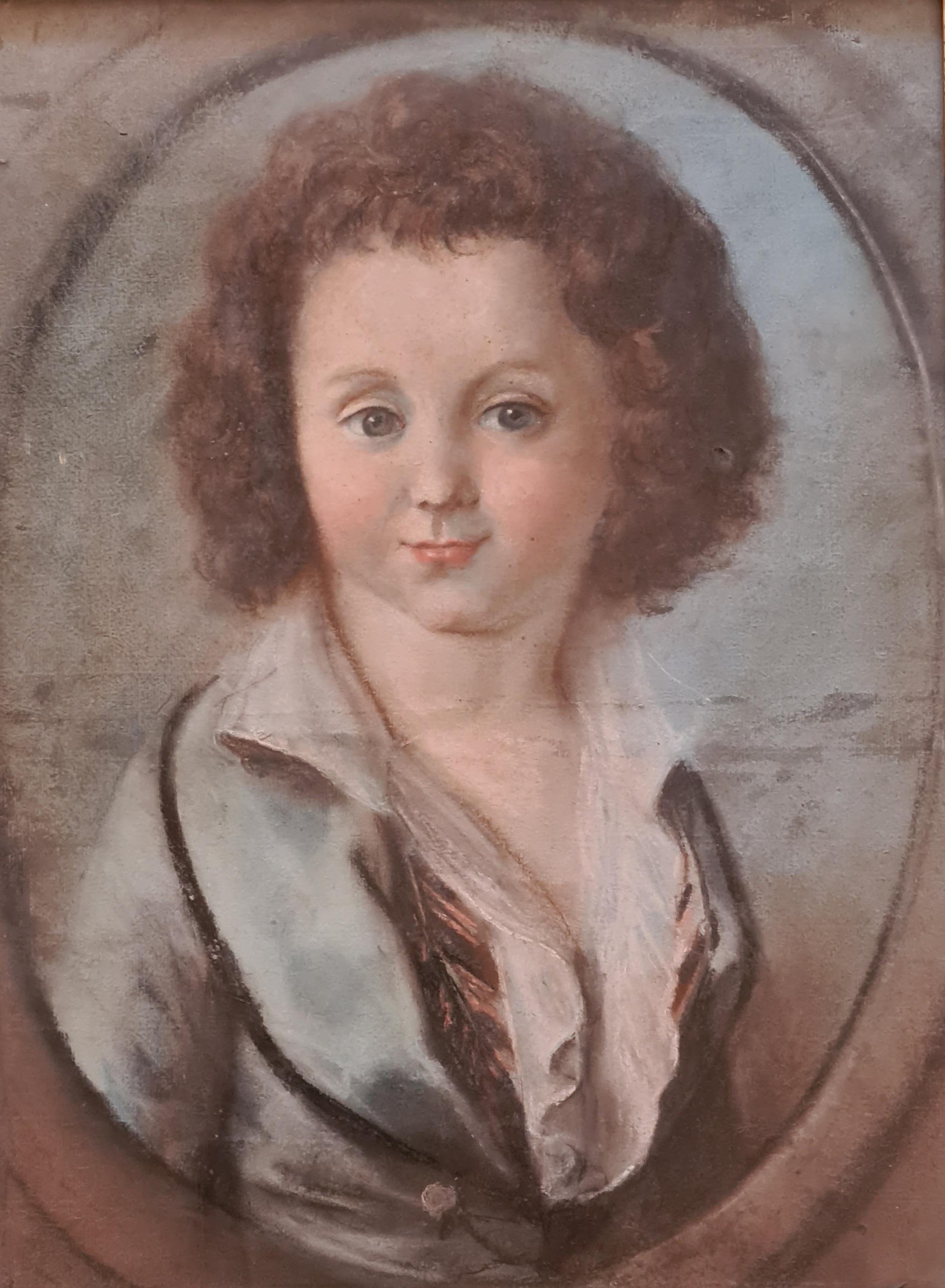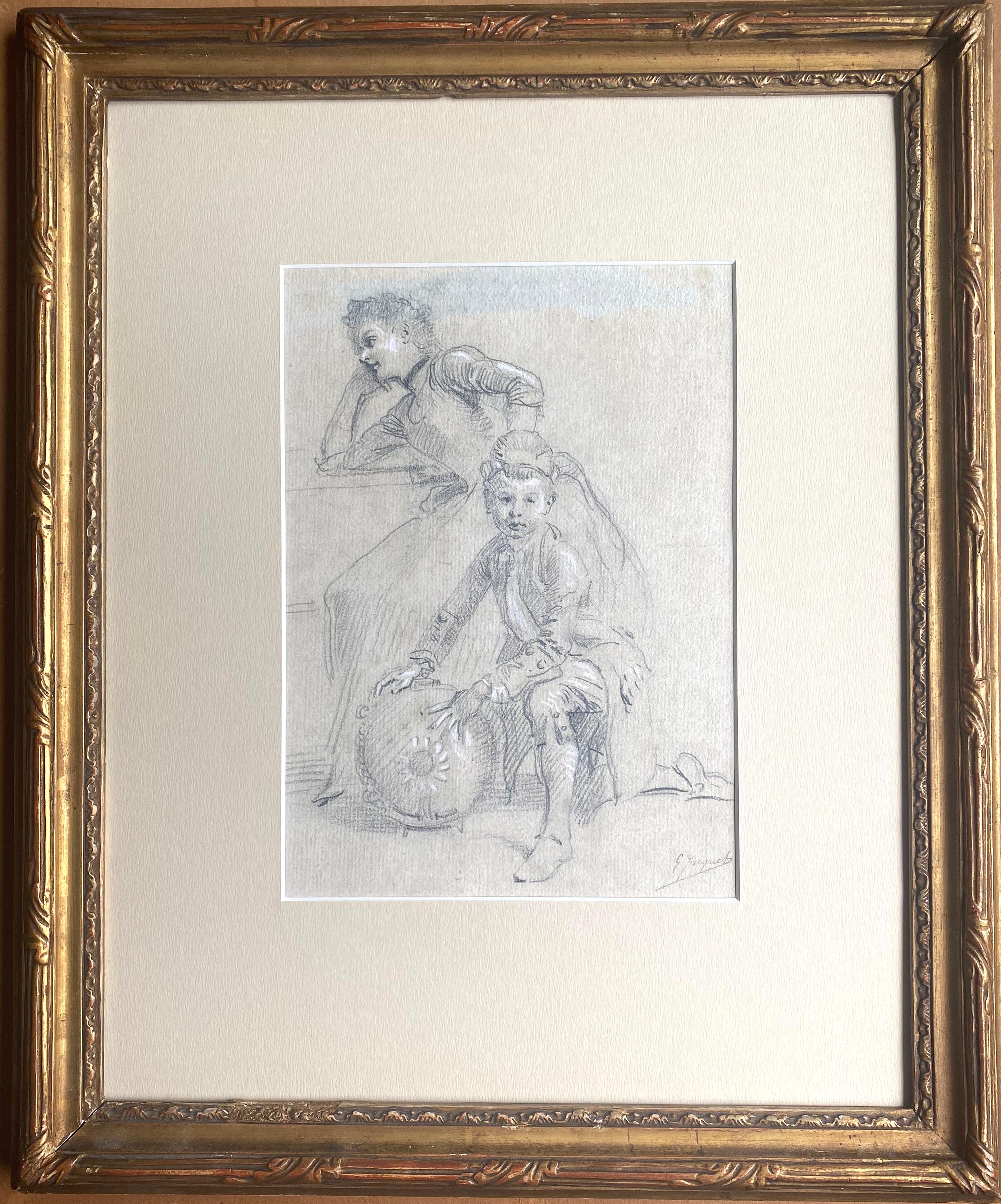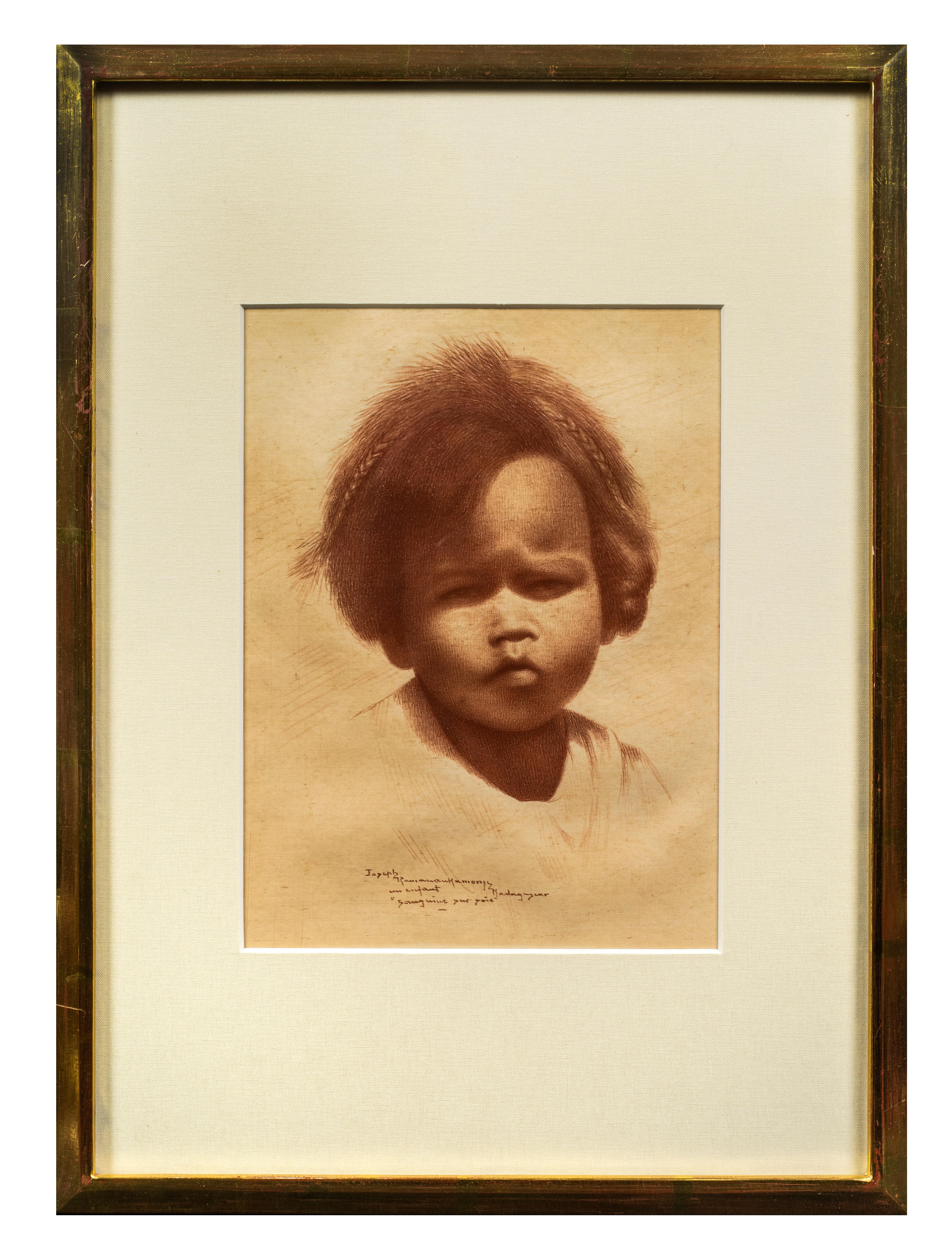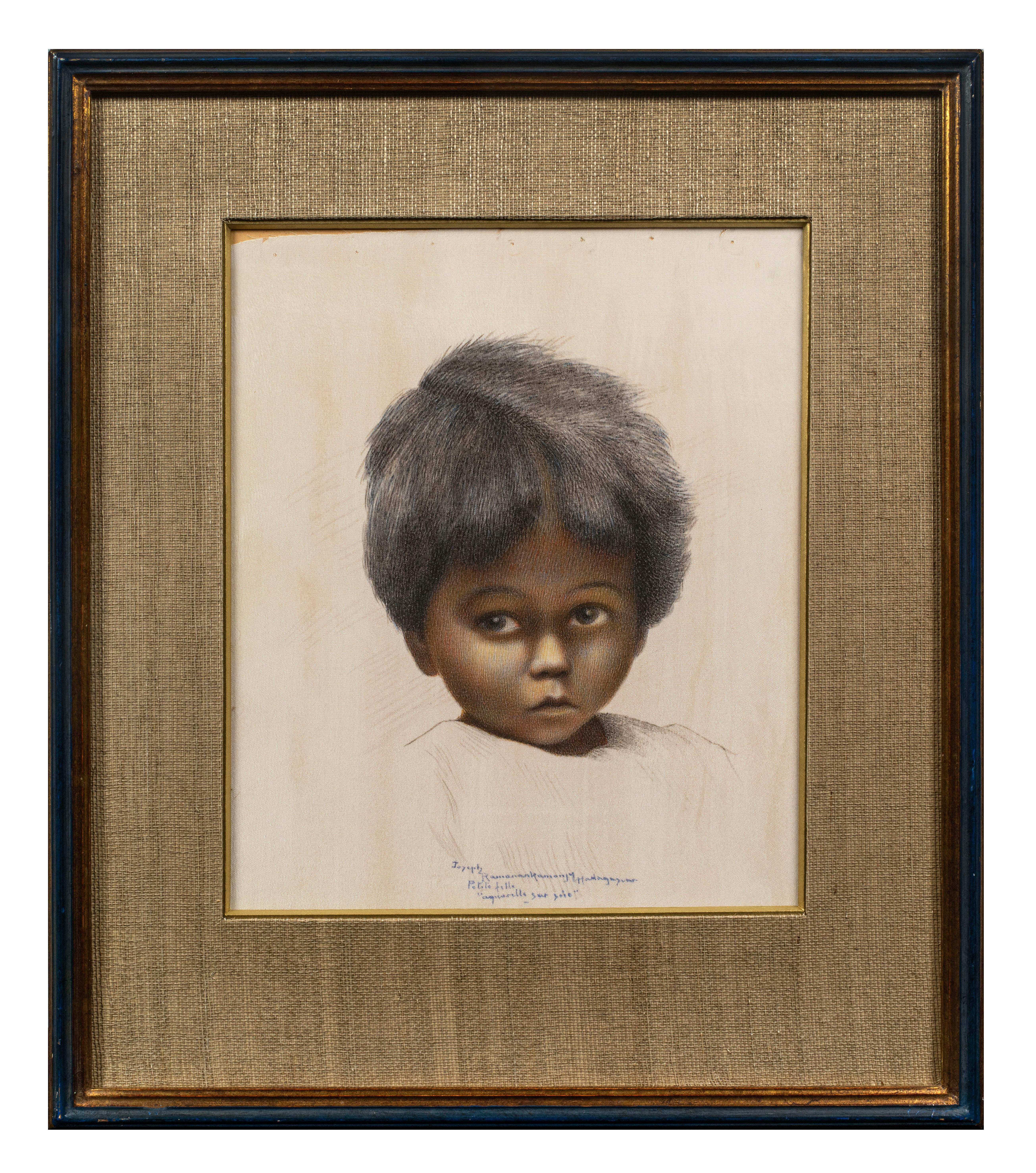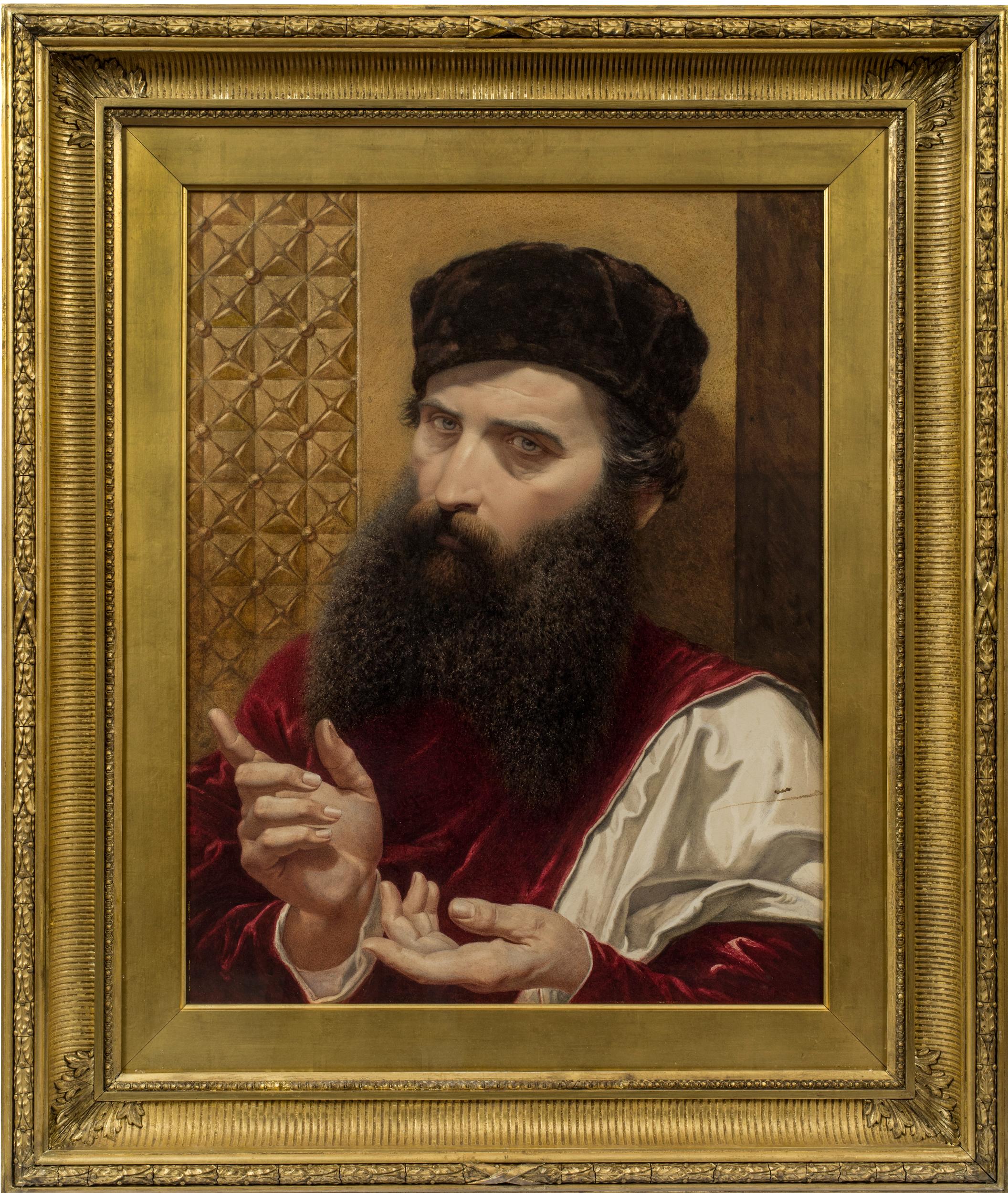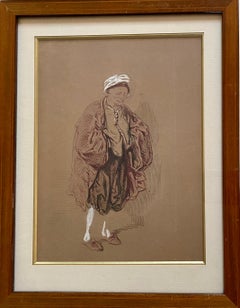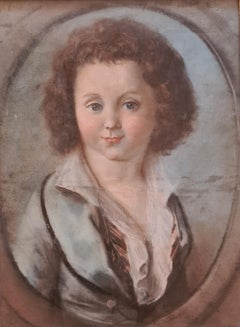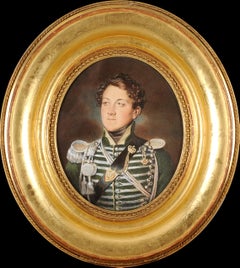
Portrait of a Second Lieutenant of Horse Hunters under the French Restoration
View Similar Items
Want more images or videos?
Request additional images or videos from the seller
1 of 5
UnknownPortrait of a Second Lieutenant of Horse Hunters under the French Restoration1815-1830
1815-1830
About the Item
- Creation Year:1815-1830
- Dimensions:Height: 7.88 in (20 cm)Width: 6.7 in (17 cm)
- Medium:
- Movement & Style:
- Period:
- Condition:
- Gallery Location:PARIS, FR
- Reference Number:Seller: ARTBO T7 04 231stDibs: LU1954213106492
About the Seller
No Reviews Yet
Vetted Seller
These experienced sellers undergo a comprehensive evaluation by our team of in-house experts.
Established in 2014
1stDibs seller since 2022
7 sales on 1stDibs
More From This SellerView All
- Pauline and Severus (Illustration for the Part II, Scene II of Polyeucte)Located in PARIS, FRAlbert MAIGNAN (Beaumont-sur-Sarthe, 1845 – Saint-Prix, 1908) Pauline and Severus (Illustration for the Part II, Scene II of Polyeucte) Ink, grey wash Signed lower left 51 x 35 cm Exhibition: French Watercolour Society, 11th exhibition, Galerie Georges Petit, 8, rue de Sèze, Paris. Catalogue number: 125 This classic drawing but tinted with symbolism is an excellent example of the talents of illustrator of Albert Maignan, a facet of his art that he developed significantly from 1883. It is one of five watercolours in “black ivory” created by Maignan to illustrate the Polyeucte from Cornelius, a book specially published by Mame Editions (for which Maignan worked a lot) for the Universal Exhibition of 1889. These watercolours were exhibited in 1889 at the famous Galerie Georges Petit (which hosted the 11th exhibition of the French Water Color Society) under No. 124/125/126/127/128 (Maignan exposed another illustrative drawing for “Boileau” under No. 129). Each drawing illustrating an episode of all five acts of the tragedy. Our work represents the moment when Pauline (daughter of Felix, Roman senator and governor of the province of Armenia) regains his former suitor Severus (a noble Roman general) and explains that she is now married to Polyeucte (a lord of Armenia) and she can see him again. The scene is set in a garden with a small temple of Vesta, where Pauline has filed an offering; the Pauline confidante named Stratonice, stands at his side, while Severus was accompanied by his servant Fabian. The drawing is captioned by Pauline words to Severus: “Yes I love Severus, and not doing as an excuse” The book was printed in 800 copies, containing compositions from Maignan etched by Emile Boivin...Category
Late 19th Century French School Figurative Drawings and Watercolors
MaterialsInk
- Convent interiorLocated in PARIS, FRHippolyte Victor Valentin SEBRON (Caudebec-en-Caux, 1801 – Paris, 1879) Convent interior Ink, pen and wash Signed and dated lower left 27,5 x 20 cm 1839 Pupil of Daguerre from the age of 29, Sebron entered the Ecole des Beaux-Arts in Paris under the teaching of Cogniet. He exhibited regularly at the Paris Salon between 1831 and 1878. First employed in the painting of dioramas, he then produced numerous paintings, particularly interiors of churches...Category
Early 19th Century French School Interior Drawings and Watercolors
MaterialsInk, Pen
- Souvenir from Italy: Pifferaro playing the zampogna with the familyLocated in PARIS, FRJoseph BEAUME (Marseille, 1796 – Paris, 1885) Souvenir from Italy: pifferaro playing the zampogna with the family Oil on canvas Signed lower left 73.5 x 60 cm Provenance: probably...Category
Mid-19th Century French School Figurative Paintings
MaterialsOil
- Portrait of a child with blue eyesBy Charles Zacharie LandelleLocated in PARIS, FRCharles Zacharie LANDELLE (Laval, 1821 – Chennevières/Marne, 1908) Portrait of a child with blue eyes Oil on canvas Monogrammed and dated lower l...Category
Mid-19th Century French School Portrait Paintings
MaterialsOil
- The death of General Négrier on Place de la Bastille, Paris - FranceBy Nicolas Edward GabéLocated in PARIS, FRNicolas Edward GABE (Paris, 1814 - Paris, 1865) The death of General Négrier on Place de la Bastille on June 25, 1848 Oil on canvas Signed and dated lower right 82 x 101 cm 1849 Nicolas Edward Gabé is a 19th century artist who is still little studied to this day and yet seems to have enjoyed, according to the artistic press of the time, a certain notoriety, in particular for his seascapes. The few bibliographical elements that we have come from the Salon booklets and tell us that the artist was born in Paris in 1814, therefore shortly before the end of the Empire. No elements on his artistic training are mentioned in the booklets, we just know that Gabé exhibited at the Paris Salon from 1835 to 1864 where he first practiced miniature then then approached easel painting, risking himself as well in still life that the seascapes, the landscape, the portrait or the hunting. According to press articles, he also took part in various exhibitions in the provinces such as Boulogne-sur-Mer and Marseille. Notably, Gabé did not exhibit at the Salon his large historical canvases on the revolution of 1848, which today are of obvious documentary and iconographic interest; probably for political reasons which are easily understandable to us today in view of the historical events of then. Gabé died in Paris at the age of 51 on January 4, 1865 with a mention in the January 7, 1865 edition of L'Union des Arts: “The death of Mr. Gabé, painter, well known in the export trade in paintings as well as to the auctioneers' hotel, whose sales it supplied through its numerous navies. “ "On June 25, 1848, in front of the barricades erected in the Bastille by the insurgents of the Red Republic, General Négrier fell to death, while he was uttering words of order and conciliation". Here are the opening lines of the tribute paid by Colonel Borgarelli d´Ison, friend of General Négrier. General Négrier belonged to a family from Maine, brought back by Marshal Lannes from emigration. Born in Le Mans on April 27, 1788, François Marie Casimir de Négrier entered, barely 18, as a volunteer in the 2nd Light Infantry Regiment. He began in 1806 with the campaigns of Prussia and Poland, during which he earned, through his bravery, the rank of sergeant and the decoration of the Legion of Honor. He made the following campaigns in Spain and Portugal, and left, with his regiment, only for the campaign of France, in 1814, after having risen successively, by actions of brilliance and by a serious wound, to the ranks of head of battalion and officer of the Legion of Honor, with which he was provided from October 1813. The Restoration retained his rank in his regiment. After having fought and wounded a second time seriously in Waterloo, Négrier was recalled in 1816 under the second Restoration. He was appointed, in 1825, lieutenant-colonel, then colonel in 1830, brigadier general in 1836, and of division in 1841. From March 1837 he participated in the conquest of Algeria. The Revolution of 1848 found Negrier in possession of the important command of the 16th Military Division in Lille. Quaestor of the Assembly in these times which promised to be troubled, Négrier reviewed the Place de la Concorde on June 23 at around noon various mobile guard battalions. He then took the head of 2,000 men provided by the 10th and 11th legions of the national guard and bivouacked on the Place du Palais until the next day 24. On Sunday 25 at nine o'clock, the Négrier division resumed the fight towards the Saint suburb. -Antoine. The troop gains continual advantages. At around two o'clock the column of Négrier had seized the Pont Marie: it had removed the barricades from the Quai Saint-Paul, the rue de l'Etoile, the rue des Barres...Category
Mid-19th Century French School Figurative Paintings
MaterialsOil
- The Thule King's CupLocated in PARIS, FRCamille METRA or METRA-HUBBARD (XIX - XX) The Thule King's Cup Oil on canvas Signed lower right and dated 1896. 113,5 x 146 cm Presentation at Union Exhibition of Women Painters and Sculptors 1896 under number 627 Figure painter and pastelist. She exhibited two works at the Salon of the Société Nationale des Beaux-Arts in 1895 under her maiden name METRA and implemented in 1896 in the same Salon as METRA-HUBBARD. Effectively, she married Monsieur Gustave Hubbard, Deputy of Seine et Oise, August 14, 1895. She was a member of the Union of Women Painters and regularly exhibited at the annual exhibition of 1891 to 1911 and she was repeatedly remarked. This painting refers to a poem published in 1782 by Goethe and resume it widely in his Faust (Part 1, 2759-82 lines). This poem will go to the full mode romantic nineteenth century by various translations of which the best known are Gérard de Nerval (1827) and later Louise Ackermann (1863). Franz Schubert...Category
Late 19th Century French School Figurative Paintings
MaterialsOil
You May Also Like
- The Introduction, French School, 18th centuryLocated in Middletown, NYIn this charming scene a maid appears bashful as she is introduced by her mother to the shepherd’s son. Ink and wash on hand made, cool-toned cream laid paper, 6 3/4 x 8 7/8 inches...Category
Mid-18th Century French School Figurative Drawings and Watercolors
MaterialsInk, Watercolor, Handmade Paper, Laid Paper
- The Hypochondriac: French 19th Century Theatre Comedy drawingBy Paul Gavarni (Guillaume Sulpice Chevalier)Located in Norwich, GBA magnificent and sensitively treated line drawing in coloured ink, heightened with white. It depicts Argan, the hypochondriac from Molière's play of the same name. Dating from circa...Category
Mid-19th Century French School Figurative Drawings and Watercolors
MaterialsGouache, Paper, Ink
- French 18th Century Pastel PortraitLocated in Cotignac, FRLate 18th Century French pastel portrait on paper of a young lady in period dress in a 'feigned oval'. In gilt wood frame presented under glass. Very much of its period and similar ...Category
Late 18th Century French School Portrait Drawings and Watercolors
MaterialsPastel, Paper, Crayon
- Rural couple examining a traveling carnival display – French School, 19th cent.Located in Middletown, NYRed crayon on brown light-wove paper, 6 3/4 x 4 3/4 inches (172 x 121 mm). Light toning and extremely minor, small losses at the very extreme top right and left corners (1/8-inch).Category
Mid-19th Century French School Figurative Drawings and Watercolors
MaterialsCrayon, Handmade Paper
- The Sermon on the Mount – French School, 19th centuryLocated in Middletown, NYPen and ink with wash on watermarked J Whatman 1814 paper, 11 x 8 1/4 (280 x 210 mm). Scattered minor edge losses at the left sheet edge, well outside of image area. Minor handling w...Category
19th Century French School Figurative Drawings and Watercolors
MaterialsInk, Handmade Paper
- Young elegant woman in a hatBy Edgar ChahineLocated in Genève, GEWork on paper Brown wooden frame with glass pane 92 x 73 x 5 cmCategory
Early 20th Century French School Portrait Drawings and Watercolors
MaterialsChalk, Pastel
Recently Viewed
View AllMore Ways To Browse
Chiquita Banana
I Runner
Jeu De
S Mac
Abstract Raku
French Marble 8 Table
Lebanese Abstract Art
New York City Geometric Architectural Photography
Car On Fire
Old Fishing Oil Paintings
Treasure House Table
United Air Lines
Bruno Paoli Painting
Burden New York
Neo Graphite
Peach Lithograph
Path To The Farm
Iranian Portrait

